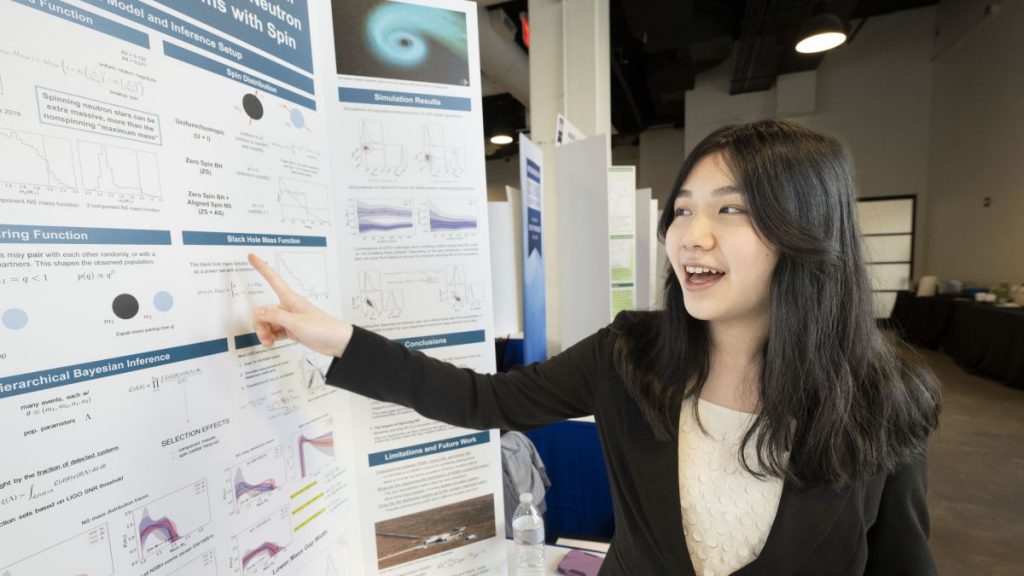Around the world, astrophysicists are poring over the blips of gravitational waves that ripple through Earth when distant black holes or neutron stars collide. One of those astrophysicists is Christine Ye, a 17-year-old student from Eastlake High School in suburban Seattle.
Ye’s work on gravitational waves, in which she observed the ripples in space-time from a collision between a black hole and a neutron star, has earned her first place in the Regeneron Science Talent Search, a nationwide competition.
Ye’s interest in astronomy began in middle school, when she fielded an astronomy-themed project in a regional science fair. Wanting to explore more, Ye came across a group of researchers at the University of Washington who worked with the North American Nanohertz Observatory for Gravitational Waves (NANOGrav).
Related: Meet the 17-year-old who discovered an alien planet
At first, Ye’s work was relatively simple: sifting through the mounds of data from gravitational wave observations. But the more she looked, the more she found herself paying attention to something traditionally under gravitational wave observers’ radar: the stellar corpses called neutron stars and a particular flavor of these objects called pulsars.
“I got to spend a lot of time with NANOGrav, looking at and using pulsars,” Ye told Space.com.
Black holes are gravitational wave observatories’ typical fodder, but tools such as the Laser Interferometer Gravitational-Wave Observatory (LIGO) and the European Virgo interferometer can see neutron stars, too. The problem is that neutron stars are less massive than black holes. As a result, when they collide or interact with each other, the ripples aren’t as strong, so it’s harder for gravitational wave observers to see them from Earth.
Still, Ye began looking into the data. In particular, she started simulating binary star systems — how they might evolve and die, transforming into black holes and neutron stars that might collide and make waves. She wanted to see if her simulations might reproduce the waves that earlier astrophysicists had seen.
One thing you can learn from neutron stars is how massive they can get. Astronomers have seen plenty of neutron stars and plenty of black holes, but the most massive neutron stars are still less massive than most known black holes.
Astrophysicists call this discrepancy a mass gap, and any object whose mass lies in the gap’s murky depths is of great interest.
When Ye simulated collisions of neutron stars with black holes, she made the neutron stars rotate — something many neutron stars, including pulsars, are known to do. She found that, if a neutron star were spinning, it could be massive — more massive than any neutron star known, placing it well within the mass gap.
Ye’s work is currently being peer reviewed and will be published soon. Ye looks forward to a future in which astrophysicists and gravitational wave watchers can see more than one event at a time.
When she looks back on the project, Ye said she was surprised by how much modern astronomy is different from the stereotypical image of a person peering through a telescope.
“The vast majority of the work I did was programming, and running all these statistics and doing all these inferences,” Ye told Space.com.
Follow us on Twitter @Spacedotcom and on Facebook.

